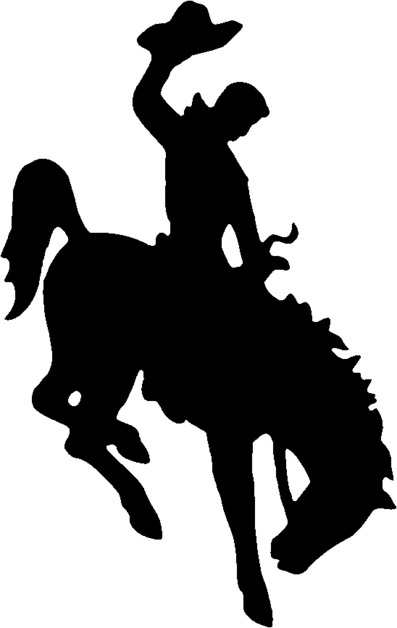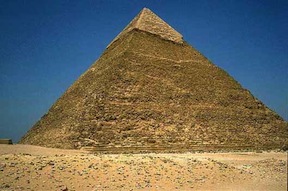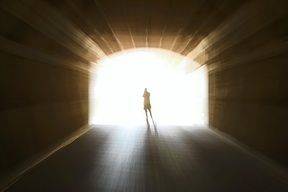by Sam Glaser
 This Rosh Chodesh Nissan I had the pleasure of culminating my eight-day tour of Florida with a Shabbaton in Cooper City, just north of Miami. Just before launching into Kabbalat Shabbat services I sang Auld Lang Syne. After all, we just concluded Adar, the final month of year in terms of the biblical count. That makes the transition into Nissan the true New Year’s Eve. As soon as the moon is full, on the eve of the fifteenth night of the first month, we celebrate our annual birthday as a nation. Some 3000 years ago we were a nation enslaved by a decadent tyrant, yearning for freedom. At the stroke of midnight that first Passover, after nine months of plagues, we emerged from the womb of Egypt to our destiny of freedom. The concealment of Adar gives way to open revelation at the Sea of Reeds and Sinai, and thanks to our remarkable custom of making an annual Seder, we still relish in the birth of the unbreakable soul of our nation.
This Rosh Chodesh Nissan I had the pleasure of culminating my eight-day tour of Florida with a Shabbaton in Cooper City, just north of Miami. Just before launching into Kabbalat Shabbat services I sang Auld Lang Syne. After all, we just concluded Adar, the final month of year in terms of the biblical count. That makes the transition into Nissan the true New Year’s Eve. As soon as the moon is full, on the eve of the fifteenth night of the first month, we celebrate our annual birthday as a nation. Some 3000 years ago we were a nation enslaved by a decadent tyrant, yearning for freedom. At the stroke of midnight that first Passover, after nine months of plagues, we emerged from the womb of Egypt to our destiny of freedom. The concealment of Adar gives way to open revelation at the Sea of Reeds and Sinai, and thanks to our remarkable custom of making an annual Seder, we still relish in the birth of the unbreakable soul of our nation.
The Seder requires that we relive the experience of Exodus as if we too left our homes for the hostile desert. The Hagada guides us through a plethora of mitzvot to be performed as we grapple with the demands of this gift of freedom. I can just hear my relatives in my ear: “we have to read this whole book, before we eat dinner? Oy vey!” Moses said, “Let my people go” but didn’t stop there. The end of the sentence, “so that they may serve me,” requires that we ask questions regarding the task of the Jewish soul. If there are no children to ask the four questions, our sages insist that adults still must ask them. The Seder’s primary purpose is to awaken the child within us and create a sense of awe and gratitude. Without curiosity and sincerity there can be no revelation. You have not properly celebrated this venerated holiday unless you have rekindled a sense of AMAZEMENT. The question is, in the era of information overload, media bombardment and iphone/crackberry addiction, how do we regain a sense of WOW in the realm of the spirit?
I think the best method is to remind ourselves that we have a powerful, unique soul, a soul that is the rider while the body is the horse. Judaism
 insists that this body is no more than a meat-jacket that we must maintain with food, water and exercise so that it can continue to shlep the precious, divine soul on it’s mission. Throughout the year we indulge in petty material concerns and accumulations. Come Pesach, along with our physical spring-cleaning we have the opportunity to get down to the soul level in our worldview and interpersonal connections. Kabbalah has given us a window into the soul that is a perfect user manual that engenders pride in ownership. For those empirical types that must see it to believe it, our tradition teaches a “five levels of the soul paradigm” that clarifies the outlines of the ephemeral self. In the interest of having a wide-eyed, openhearted Pesach, allow me to take you through the journey of these five levels, based on the teachings of Rabbi David Aaron and Rabbi Tom Meyer.
insists that this body is no more than a meat-jacket that we must maintain with food, water and exercise so that it can continue to shlep the precious, divine soul on it’s mission. Throughout the year we indulge in petty material concerns and accumulations. Come Pesach, along with our physical spring-cleaning we have the opportunity to get down to the soul level in our worldview and interpersonal connections. Kabbalah has given us a window into the soul that is a perfect user manual that engenders pride in ownership. For those empirical types that must see it to believe it, our tradition teaches a “five levels of the soul paradigm” that clarifies the outlines of the ephemeral self. In the interest of having a wide-eyed, openhearted Pesach, allow me to take you through the journey of these five levels, based on the teachings of Rabbi David Aaron and Rabbi Tom Meyer.
The first level is known as the NEFESH. This is an aspect of consciousness that we share with the animal kingdom. It is the basic life force, our instinct, our autonomic survival functions. But for humans it takes on a more elevated role. When we state that we were made “b’tzelem Elokim”, in God’s image, we are referring to this elevated nefesh soul level. As humans we don’t merely rely on instinct, we also have the deep-seated feeling of nobility. A dog doesn’t pee on your Persian rug in order to avoid a swat with a rolled up newspaper. We don’t pee on the rug because it’s just not the right thing to do. An important aspect of our nefesh is our craving for meaning in our life. The worst form of torture
 during the Holocaust was meaningless manual labor. Without meaning, our lives become living agony. Also, the nefesh is being expressed when we hear the voice of the conscience speaking, that fundamental, cross-cultural concept of good and evil. We know it’s inherently wrong to punch an elderly stranger in the street. Hollywood movies with heroes and villains sell worldwide because all humans share certain internal ethics. That’s our nefesh speaking. Darwinian evolutionists and physicists can’t quite explain why it’s there. But it is. And we know its voice like we know we have five fingers on our hand.
during the Holocaust was meaningless manual labor. Without meaning, our lives become living agony. Also, the nefesh is being expressed when we hear the voice of the conscience speaking, that fundamental, cross-cultural concept of good and evil. We know it’s inherently wrong to punch an elderly stranger in the street. Hollywood movies with heroes and villains sell worldwide because all humans share certain internal ethics. That’s our nefesh speaking. Darwinian evolutionists and physicists can’t quite explain why it’s there. But it is. And we know its voice like we know we have five fingers on our hand.
The next level is known in Kabbalah as RUACH. This level of the spirit is based in our quest for truth. It is a uniquely human attribute and words are the vehicle for its dissemination. What are we saying when something “rings of truth?” It means that our soul can intuit truth from falsehood. It’s the reason why our society rewards honesty and punishes the liar. When we hear that someone is badmouthing us with harsh gossip, it’s our ruach that is damaged. Having a good name means maintaining the integrity of one’s ruach. When it’s damaged by slander or our own personal shortcomings, it’s our ruach that is feeling acute pain. I think that’s why really great music endures forever. Our ruach soul hears it as truth, as something bigger than us, a taste of eternity.
The third level is known as the NESHAMA. Neshama is the generic Hebrew term for soul. But in this five level model, it is the idea of the power of our thoughts. We are affected by more than mere actions and words. We have ideals. We have a sense of mission. A feeling that we have a special purpose, that each of us is
 unique, in spite of the fact that we are one among billions of similarly entitled beings. It’s our neshama speaking when we pursue happiness. I’m sure scientists might have convincing theories about why we strive to feel in sync, on a mission, why we feel we are deserving of happiness. But any true pleasure seeker does not need science to explain this universal drive. When we stop to think about it, it’s clear we have a neshama, a divine force informing our every motivation.
unique, in spite of the fact that we are one among billions of similarly entitled beings. It’s our neshama speaking when we pursue happiness. I’m sure scientists might have convincing theories about why we strive to feel in sync, on a mission, why we feel we are deserving of happiness. But any true pleasure seeker does not need science to explain this universal drive. When we stop to think about it, it’s clear we have a neshama, a divine force informing our every motivation.
The next level of the soul is the reason that Passover is one of the most widely celebrated holidays. We love the traditions, songs and stories associated with our annual homecoming. We love spending time with our families and friends, engrossed in the powerful mitzvah of the transmission of our heritage. That, my friends, is our CHAYA. Chaya means life force and that of every nation is distinctive. It’s our chaya that makes Jewish summer camp so redeeming. It’s our chaya that gets us to services on Friday night. Yes, the prayers will be the same, but we just love to be with our fellow Jews and eat herring and challah. Germans have their own chaya. So do Nigerians and Japanese. One of the best examples of the presence of chaya is the way our sacred texts describe death. Our biblical heroes are “gathered to their people.” That’s right…we are all going to be gathered to our people at the end of our lives. Our chaya is that “pinteleh yid” or Jewish pilot light that gets ignited when you hear a great sermon or Chassidic story (or Sam Glaser song!) It’s your chaya that made you fall in love with Israel the first time you stroked the stones of the Kotel or walked down Dizengoff. This fourth level of the soul is so powerful that it transcends common sense in regards to the survival of the fittest; thanks to our chaya we are willing to lay down our lives for the love of country.
The top of this pyramid of the five levels of the soul is known as YECHIDA. It’s the identification with the ultimate universal soul, connecting with that entity we call God. Yechida is related to the idea of being separate, alone with another. The yichud room at a traditional Jewish wedding is when the bride and groom are secluded in an intimate space just after the ceremony. We’ve all felt yechida: those times when we are deeply connected and empowered and totally blown away. For some of us, it was the birth of our child. For others, a perfect ski run on the back bowls of Vail. Some find it in Yosemite or surfing a glassy, overhead, bowling wave. Ask anyone who feels they were saved from a potential harrowing accident by a miracle. The Seder is a fifteen-step opportunity to spend an entire night in yechida. We say the Sh’ma twice a day to remind ourselves of the possibility, just for that moment, to love God with all our heart, soul and might.
idea of being separate, alone with another. The yichud room at a traditional Jewish wedding is when the bride and groom are secluded in an intimate space just after the ceremony. We’ve all felt yechida: those times when we are deeply connected and empowered and totally blown away. For some of us, it was the birth of our child. For others, a perfect ski run on the back bowls of Vail. Some find it in Yosemite or surfing a glassy, overhead, bowling wave. Ask anyone who feels they were saved from a potential harrowing accident by a miracle. The Seder is a fifteen-step opportunity to spend an entire night in yechida. We say the Sh’ma twice a day to remind ourselves of the possibility, just for that moment, to love God with all our heart, soul and might.
We can’t stay in the realm of yechida. We get momentary glimpses and then our ego pulls us out. Perhaps that is why experiences in nature get us there more easily…our egos are out of the way at that moment of pure awe at our wondrous surroundings. This Pesach when we mention the Jews united at Sinai, try to teleport yourself to the base of the mountain and personally witness the power of the fire, and smoke, the shofar blast and the overwhelming divine presence. Of course, in the narrative we didn’t stay in this lofty place…shortly after the revelation we were building a golden calf. Even though yechida is fleeting it is still of supreme value. Imagine you are walking in the countryside on a stormy, moonless night. True darkness envelopes you and you fear you will fall off the path. But every now and then a brilliant lightning strike illuminates the landscape. Just like you can use that flash to find your way, so too can you use your moments of “yechida memory” to guide you through times of darkness. I think God gives us these tastes of yechida to keep us close and give us comfort knowing it’s the world of yechida that our souls are destined to reach at the end of our days.
Any time I sit next to a self-professed atheist on an airplane, a short discussion of the five levels of the soul yields new vistas into feeling God’s presence, or at least into the miracle of our human complexity. I find the topic of Near Death Experience particularly convincing for the die-hard skeptics. The pioneer in this fascinating
 field, Raymond Moody, interviewed thousands of individuals that “flat-lined” for over twenty minutes and then came back to life. Many report a multi-stage chain of events that parallel the description of death in Kabbalah. Commonly experienced phenomena are seeing their body from above, hearing everything that was going on and enduring a rapid review of their lives (much like the great James Brooks movie Defending Your Life.) Some are met by loved ones and are then sent back or feel they must return to their corporeal existence to complete a task. Nearly all see or feel a powerful light that is loving and comforting. Our rabbis tell us that this is the “ziv hashechina,” the light of God, of creation. After all, the sun wasn’t formed until the fourth day…could this be the light that God stated was “good” on the first?
field, Raymond Moody, interviewed thousands of individuals that “flat-lined” for over twenty minutes and then came back to life. Many report a multi-stage chain of events that parallel the description of death in Kabbalah. Commonly experienced phenomena are seeing their body from above, hearing everything that was going on and enduring a rapid review of their lives (much like the great James Brooks movie Defending Your Life.) Some are met by loved ones and are then sent back or feel they must return to their corporeal existence to complete a task. Nearly all see or feel a powerful light that is loving and comforting. Our rabbis tell us that this is the “ziv hashechina,” the light of God, of creation. After all, the sun wasn’t formed until the fourth day…could this be the light that God stated was “good” on the first?
For the week of Pesach we eat a flat, crunchy soul food called matzah. The rest of the year it’s ok to live in the realm of bloated, leavened bread. But for this time of renewal, we go back to basics. Simplicity, humility, spirituality, in other words, the realm of the soul. This is the time to listen to our soul messages. To slow down enough to get on the universe’s schedule. To use the four cups of wine to get just a bit out of time and space so that we can enter our story, a story that is still being written. Just like a screenwriter asks for feedback from actors, God is hungry for our interaction. The rabbis gave us a Haggadah with more questions than answers and massive red herrings to pique our curiosity. I ask my readers to enter the sweet realm of childlike innocence, the place of wonderment, unguarded affection and openness. Remember the five levels of the soul and how the realm of the spirit can be even more real than that of the material. And most importantly, feel the outpouring of love of the Creator that has maintained and sustained us to reach this season once again, amen.
Tags: amazement, beth emet, cooper city, freedom, Jewish Music, matza, miracles, nefesh, neshama, passover, pesach, Sam Glaser